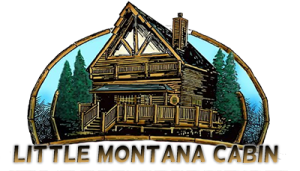



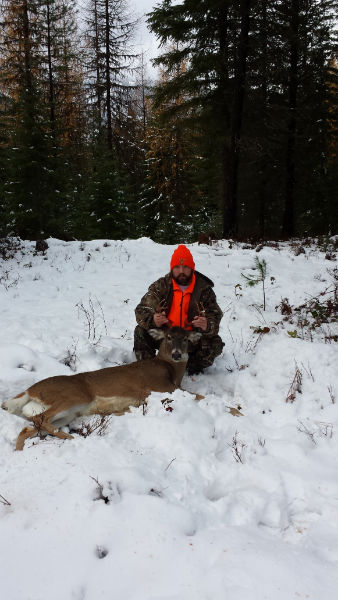

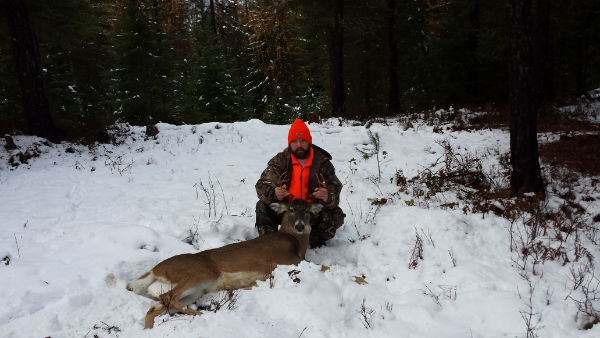


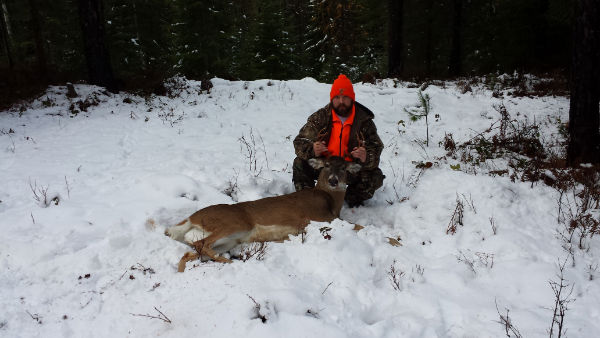

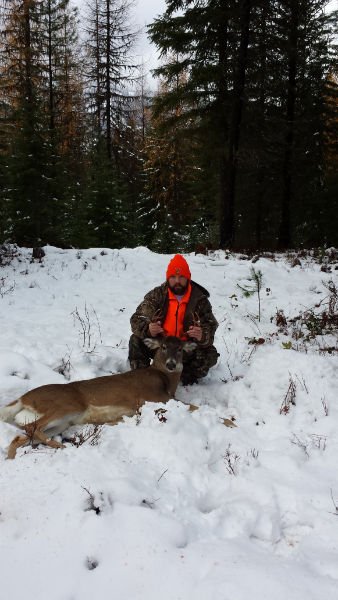
2012 Elk and deer hunting outlook
by Montana Fish, Wildlife & Parks
October 2, 2012
There are elk in Montana’s hills and if the big sky drops some snow hunters could be in for a banner season in many areas.
“Most hunters are going to find elk populations in good physical shape and will benefit from liberal hunting opportunities,” said Quentin Kujala, Montana Fish, Wildlife & Parks’ wildlife sections coordinator in Helena. “If the weather cooperates, and if hunters do their homework and line up access early where it’s needed, we’d expect very good harvest numbers by season’s end in late November.”
Montana’s general, five-week long, elk hunting season opens Oct. 20. Kujala noted that cold and snowy conditions should lead to elk hunting success, while mild weather usually spells lower elk harvests, despite additional elk-hunting permits and more liberal seasons. “We’re all hoping the weather tips to hunters’ favor this fall,” Kujala said.
Predation on elk by wolves has contributed to some depressed elk populations in parts of western and southwestern Montana. Also, Montana’s forest fires may have changed local elk distributions and access opportunities. Hunters need to understand that some landowners will be busy rebuilding fences and other structures lost to fire this fall. A call ahead of time, and especially an offer to help, would be long appreciated.
For more information on elk hunting in Montana, visit FWP’s website at fwp.mt.gov, click “Hunting” then click Hunting Guide.
Here’s a regional rundown on what elk hunters can expect this season.
Region 1—Northwestern Montana
• Elk populations remain stable. Spring surveys revealed a regional average of 25 calves per 100 cows. More than 3,470 elk were counted during spring helicopter surveys. Hot spots for elk include the lower Clark Fork region and the Bob Marshall Wilderness complex.
Region 2—Western Montana
• Elk numbers are generally above the long-term average but the distribution and trend of elk populations raises concerns for the future. Calf production and survival is low in several districts along the border with Idaho and adjoining the Bob Marshall and Scapegoat wilderness areas, where opportunities to hunt antlerless elk are sharply reduced.
To allow bull numbers to rebound, a special permit is required to hunt bull elk in Hunting Districts 250 and 270 (Upper Bitterroot). Elk numbers generally remain high on private lands located east of Missoula, but calf survival was unusually low through last winter.
2012 Deer hunting outlook
Deer hunters in Montana will find a mix of hunting opportunities across the state when the general season opens Saturday, October 20.
“Conditions have been mixed the past several years and deer in many areas of the state are still rebounding from the tough winter of 2010,” said Quentin Kujala, Montana Fish, Wildlife & Parks’ wildlife sections coordinator in Helena. “The good news is that we’re seeing better fawn survival and good fawn production in many areas, but some are still struggling with low numbers and production.”
Overall, the better mule deer and white-tailed deer populations are currently in parts of Region 4 and some areas of Regions 2, 3 and 5.That’s due in part to central and western Montana dodging the recent winter losses experienced by deer in eastern Montana.
“Mule deer and white-tailed deer will be found in local concentrations based upon habitat,” Kujala said. “One generalization is that white-tailed deer are most often associated with the forested habitats of northwestern Montana and in riparian areas,” Kujala said. “In addition to scouting for good habitat and access to private lands, a spate of cold and snowy weather often leads to good hunting.”
Montana’s forest fires have plagued much of Montana this season. Hunters need to understand that some landowners will be busy rebuilding fences and other structures lost to fire this fall. A call ahead of time, and especially an offer to help, would be long appreciated.
For more information on Montana’s five-week long general deer hunting season, visit FWP’s website at fwp.mt.gov, click “Hunting” then click Hunting Guide.
Here’s a regional rundown on what deer hunters can expect this season.
Region 1—Northwestern Montana
• Biologists counted more than 5,580 white-tailed deer this spring and observed a fawn adult ratio of 44, which indicates a stable to increasing regional herd. Near Kalispell and the surrounding area, white-tailed deer herds continue to grow as a result of the recent mild winter. White-tailed deer are plentiful in the Swan Valley and the Lower Clark Fork Valley. Hunting access is good but involves stalking game in heavy coniferous habitats. Mule deer populations remain stable with a recruitment rate of 28 fawns per 100 adults classified via helicopter surveys this spring. Hot spots for mule deer include the Cabinet and West Cabinet mountains, the high country of the Lower Clark Fork, the Whitefish Range and the subalpine areas of the Mission and Swan mountain ranges. Mule deer hunters typically are more successful at the higher altitudes.
Region 2—Western Montana
• White-tailed and mule deer are common but numbers generally are below historic averages. FWP has restricted hunting opportunities for antlerless deer this year to limit any further declines and speed population increases. Hunting for whitetail bucks should be average overall. Hunting for mule deer bucks is by permit-only in several hunting districts.
